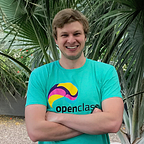What does a personalized education look like?
Alec Kretch is the founder of OpenClass — easily build mastery-based review assignments around your content for free at OpenClass.ai.
The concept of personalized learning is simple: an education that caters to a student’s unique needs is better than an education that does not.
The implementation of personalized learning is more complex: a single educator logistically cannot cater to the unique needs of each student.
Machine learning can have a significant impact on bridging this gap.
But, despite its branding, machine learning isn’t magic. Machine learning models are built on proposed solutions. Thus, understanding what a personalized education looks like is the critical first step before it can be actualized.
Elements of the classroom are commonly broken down into four categories: content, process, product, and learning environment. Let’s examine personalization under the lens of each one.
Content
What we learn should be dictated, at least to some degree, by our interests and readiness.
Think about the things you know most about. Your knowledge level is likely directly associated with your interest level. As humans, we’re inclined to dive deeper into concepts that stimulate us.
Intrinsic learners — those motivated by learning — learn better than extrinsic learners — those motivated by external factors, such as grades. But that’s not to say a student is one type of learner or the other. Rather, a student’s motivation varies based on content.
A subject may be interesting, but a topic may be boring. A topic may be boring, but a reading on it may be interesting.
Readiness goes hand-in-hand with intrinsic and extrinsic motivations. If a student tries to learn about a subject before they’re ready, they could be lost before they even start.
Curriculum should be personalized as much as possible to follow the interests of the learner. Machine learning can greatly help identify unique interests and knowledge gaps to suggest optimal content.
Process
All students learn differently, and teaching methods should reflect this notion.
It is inherently unfeasible for one educator to deliver their classes in a unique format for each of their students. Rather, machine learning should play the role of personalizing process to account for learning styles and pace.
An ideal machine learning system would serve as a 1-on-1 tutor for each student to master curriculum in an optimal manner.
Product
One standard mode of assessment does not allow all students to maximize their application of knowledge.
Some students thrive in the standard test setting––answering multiple-choice questions in a stress-induced environment allows them to accurately demonstrate their knowledge. Many other students, however, would be better-suited leading a group discussion, writing an essay, or building a relevant project to prove their mastery.
Understanding what a student knows is important in a personalized classroom, as it dictates the content and the process. Standard assessments often serve to rank students by memory, rather than adopt a class individually.
Machine learning can help identify or create personalized assessments for students that play to their strengths.
Learning environment
Where we learn and who we learn with also plays a role in the learning process.
A personalized learning environment is the one optimal for each student. A comfortable place to learn. A good group for a group project. The right place to study. An open environment to ask questions.
Machine learning cannot replace a learning environment, but it could potentially improve it. While the use of machine learning to improve content, process, and product is direct and clear, some ideas of how it could be used to personalize learning environment include matching students for group projects, translating lectures into a student’s native language, and strategically playing music to enhance studying.
